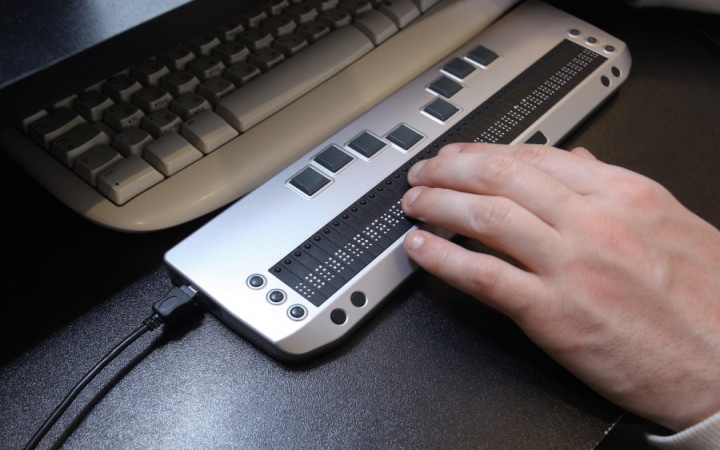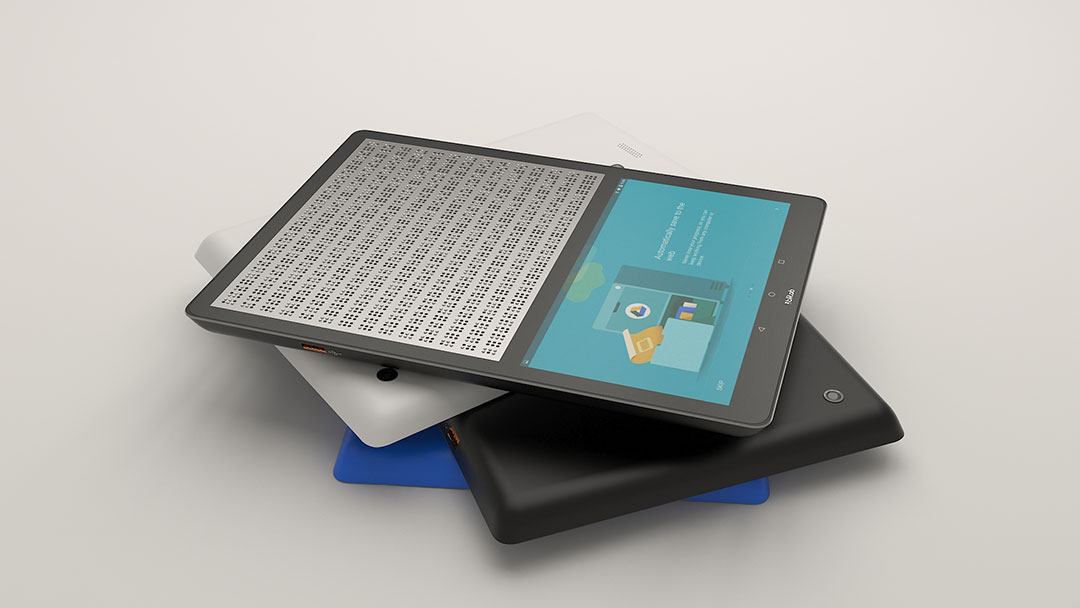Empowering Freedom With Assistive Modern Technology for the Blind
The assimilation of assistive innovation into the lives of individuals with visual impairments stands for a considerable improvement in promoting independence and self-sufficiency. From innovative display viewers to innovative smart walking canes, these devices not only improve daily navigating and interaction yet likewise equip individuals to involve meaningfully in different aspects of life. As we check out the myriad advantages and real-world applications of these technologies, it ends up being vital to take a look at the underlying variables that add to their effectiveness and the potential for future growths in this essential field.
Overview of Assistive Innovation

The growth of assistive technology is grounded in concepts of inclusivity and empowerment. Technologies in software program, equipment, and sensory enhancements offer individuals with choices tailored to their particular needs. From display viewers that transform message to speech, to tactile gadgets that share info with touch, these tools transform the way individuals involve with their environments.
Along with useful applications, assistive technology cultivates better social inclusion and engagement in different fields, including education and employment (Screen readers for the blind). As research study and development remain to develop, the capacity for assistive innovation to additionally enhance the lives of visually impaired people continues to be promising, leading the way for an extra fair culture where every person can flourish
Kinds of Assistive Instruments
A range of assistive tools have emerged to support individuals with aesthetic disabilities, each made to meet certain demands and improve day-to-day functioning. These tools vary from low-tech solutions to high-tech advancements, giving diverse alternatives for customers.
Low-tech devices include magnifiers and large-print materials that aid in reading and writing. Braille devices, such as Braille stylus pens and slates, enable tactile analysis and communication. Alignment and wheelchair help, like white canes, aid users browse their setting safely.
On the greater end of the range, digital zoom systems and display visitors offer considerable support. Digital magnifiers permit customers to increase the size of message and images on displays, while screen visitors convert electronic material right into synthesized speech, assisting in access to information on computers and mobile phones.
Smart device applications also play a crucial role, supplying functions like message recognition and navigating support. Wearable technology, such as clever glasses geared up with enhanced reality, is becoming a promising tool to improve situational awareness.
Benefits of Assistive Technology
The assimilation of assistive modern technology dramatically improves the quality of life for individuals with aesthetic disabilities. These modern technologies empower customers by advertising freedom, allowing them to browse their atmospheres extra properly and execute daily tasks with higher ease. For example, display readers and magnifying software application enable individuals to gain access to digital details, cultivating expert and academic possibilities that might have previously been out of reach.
Additionally, assistive devices such as smart canes and GPS applications visit the site give real-time navigating assistance, boosting movement and safety. This raised autonomy not only improves self-esteem but additionally motivates social involvement, allowing users to participate even more totally in their areas.
Assistive innovation additionally helps with communication, helping users get in touch with others via voice recognition and text-to-speech applications. This capacity is essential for preserving relationships and accessing crucial details.
Furthermore, the personalization choices readily available with numerous assistive modern technologies guarantee that individuals can tailor gadgets to their certain needs, even more improving functionality and efficiency. On the whole, the benefits of assistive innovation for individuals with visual disabilities are extensive, advertising a much more comprehensive culture where everybody can seek their objectives and ambitions.
Study and Success Stories
Highlighting the transformative influence of assistive technology, numerous study illustrate how people with aesthetic disabilities have actually successfully incorporated these devices into their lives. One engaging instance entails a college student who utilized display reading that site software to browse on the internet resources and scholastic materials properly. This innovation not just facilitated her education and learning however also boosted her self-confidence in participating in discussions and team projects.
An additional study features a professional that utilizes a smartphone application created for navigating and object recognition. By using this application, he has reclaimed autonomy in both his personal and workplace, allowing him to commute separately and involve with colleagues much more effectively.
Furthermore, a retiree shared her experience with braille e-readers, which enabled her to access a substantial my website variety of literature and stay connected with her area through publication clubs.
These success tales underscore the crucial role of assistive technology in fostering self-reliance, improving lifestyle, and promoting social assimilation for individuals with aesthetic problems (Speech-to-text devices for low vision). By embracing these cutting-edge devices, customers can overcome difficulties and confiscate chances that contribute to their expert and individual gratification

Future Trends in Assistive Technology
Development in assistive technology is poised to redefine the landscape of assistance for people with visual impairments. Arising patterns highlight the assimilation of artificial knowledge (AI) and artificial intelligence, which enhance the performance of gadgets that assist with navigating and info ease of access. For instance, AI-driven applications are currently capable of translating visual information in real-time, enabling users to involve with their environment more independently.
Furthermore, the growth of wearable modern technology is advancing rapidly. Smart glasses equipped with augmented fact (AR) can supply audio descriptions of environments, transforming just how users engage with public rooms. These devices not just promote freedom yet likewise foster social incorporation.
Additionally, the Web of Points (IoT) is making homes smarter, enabling seamless connectivity between everyday appliances and assistive devices. This connection empowers users by making it possible for automatic responses and voice-activated controls tailored to individual needs.
Conclusion
To conclude, assistive modern technology plays a pivotal role in empowering people with aesthetic problems by improving their independence and interaction with their environments. The diverse variety of devices and applications available not just promotes navigating and communication however additionally advertises social combination and opportunities for expert and individual growth. As innovations continue in this field, the potential for enhancing the lifestyle for those with aesthetic problems will certainly expand, cultivating higher freedom and empowerment.
